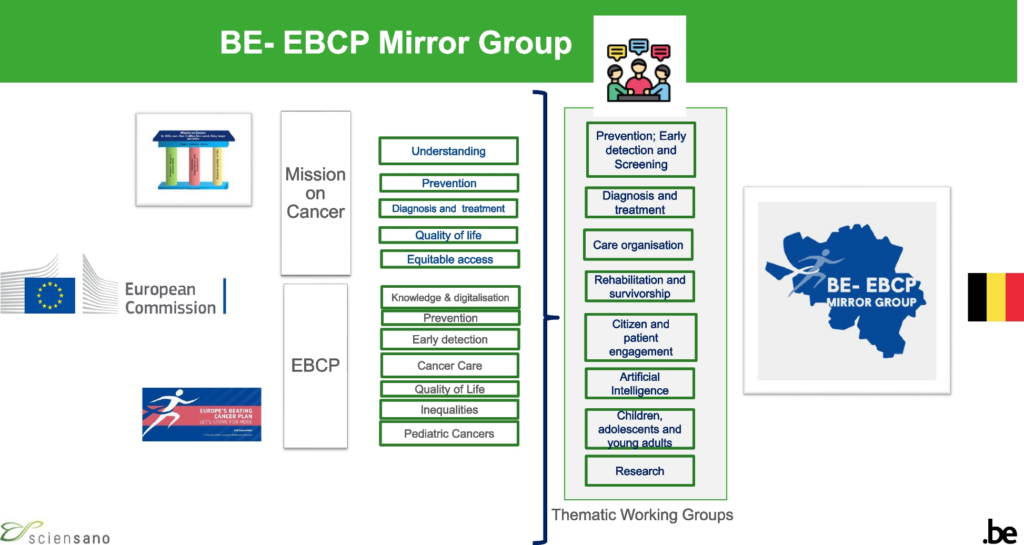Fig. 2
Belgium’s participation in the EBCP projects for the period 2021–2023*
*Note: [1] The EU calls listed here are those related to cancer in the EU4Health programme. We are using the participation of the Cancer Centre in the EU4Health Programme as a proxy to Belgium’s participation in the EBCP; [2] Some calls can fund several projects. When this is the case, the projects are counted just once for a better correspondence with the number of EU call openings
Fig. 3
Belgium’s participation in the Mission on Cancer for the period 2021–2022
Note: Latest available data on EU calls and BE projects funded by the Horizon Europe programme Cluster 1 Health and the Mission on Cancer. The calls are categorized based on their link to the 13 Mission on Cancer recommendations; [2] Some calls can fund several projects. When this is the case, the projects are counted just once for a better correspondence with the number of EU call openings
Although participation seems lower in the area of prevention in comparison to the number of EU calls that were open, this is not necessarily a reflection of the number, nor the quality or performance of existing cancer prevention activities in Belgium. For instance, the number of European projects and calls shown in Figs. 2 and 3 does not reflect the amount of funding allocated overall, or to the Belgian partners. In any given call topic/area, low EU-MS participation can be due to several factors. An important obstacle to EBCP implementation and participation in EU projects can be, for example, the lack of alignment of certain EU calls with existing national programs and interventions. MS participation is also rationalized based on contextual factors, such as governmental priorities given the policy cycle, existing infrastructures, the availability of co-funding, human resources, as well as cultural norms and values.
Source link : https://archpublichealth.biomedcentral.com/articles/10.1186/s13690-024-01383-5
Author :
Publish date : 2024-09-26 07:00:00
Copyright for syndicated content belongs to the linked Source.
